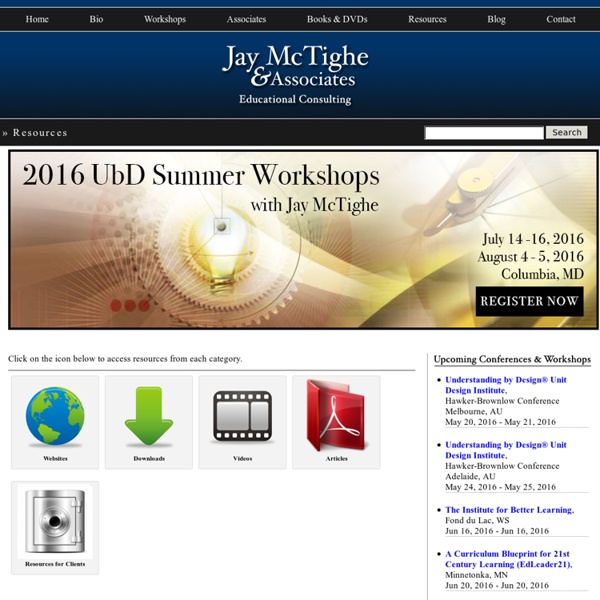



Ohio English Language Arts The State Board of Education adopted Ohio's New Learning Standards in English Language Arts as a guide to teaching and learning in the classroom. The Kindergarten – Grade 12 standards will be fully in use in Ohio classrooms in the 2014-2015 school year. Introduction to Ohio's New Learning Standards for ELA, Model Curriculum, and Assessment Ohio's New Learning Standards Addtional Resources for Diverse Learners Model Curricula Ohio teachers worked in teams in 2010 to suggest instructional strategies and resources that align with the Ohio's New Learning Standards in English Language Arts. In October 2013, Career Connections strategies were added to the Instructional Strategies in the model curricula. Problems, Ideas and Evaluation
Technology for Teaching and Learning Educational Technology and Mobile Learning: Top 20 LiveBinders you should not Miss Digital bookmarking is a pivotal learning skill. It does not only allow you to organize your information into one single platform accessible from anywhere with an internet connection but can also help you in your professional growth. Web2.0 technologies have made it way easier for us to control and curate the content we come across online. Allow us to collect, aggregate, curate and bookmark links to resources we want to read later onLet us share resources we have collected about a topic with colleagues and studentsHelp us gather and organize web contentLet us develop our personal learning networks Allow us to create a community for sharing resources in our school or work environmentHelp us grow professionally and expand our focused knowledge I am also recommending the following bookmarking tools for you : LiveBinder is one the best bookmarking web tools out there.
The Mulvey Principle Frayer Model The Frayer Model is a vocabulary development tool. In contrast with a straight definition, the model helps to develop a better understanding of complex concepts by having students identify not just what something is, but what something is not. The center of the diagram shows the concept being defined, while the quadrants around the concept are used for providing the details. Words that work well with the Frayer Model include quadrilaterals, insects and democracies. Curriculum Leadership Journal | Scootle: a one stop shop for online curriculum content Educators are now well aware that we live in a world that is ‘both technologically rich and information-rich’ (MCEETYA, 2005). The education community is still exploring how to apply this wealth of new knowledge most usefully within schools, and individual teachers are also finding their way within a range of programs, policies and research findings. The Le@rning Federation (TLF) has developed Scootle, a website to allow jurisdictions to give their teachers a quick, approachable way to find and use digital curriculum content in their classrooms, and their school leaders a means to oversee this usage and draw on it for future school-level planning. Scootle helps educators to provide individualised learning to cater to students’ diverse needs, facilitate collaborative student learning and create additional means for teacher collaboration within a school. What is Scootle? Scootle learning paths In the collaborative workspace, students can: Using Scootle as a school leader Who can access Scootle?
I Education Apps Review - I Education Apps Review McTighe & Associates Tools for the Common Core Standards | News about tools that are being developed to support implementation of the Common Core State Standards Born to Learn ~ Home 5 Tools That Help Students Organize Research and Create Bibliographies Organizing and writing a bibliography can feel like the most tedious part of writing a research paper. The following five tools can help students organize and create their bibliographies. One of the most useful new Add-ons for Google Documents is the EasyBib Bibliography Creator. The EasyBib Bibliography Creator makes it easy to properly cite resources and format a bibliography in APA, MLA, or Chicago style. Click here for directions for the process of using this add-on. Scrible is a free service that offers a nice set of tools for highlighting, annotating, and bookmarking webpages. Cite This For Me is a tool designed to help students correctly format reference lists or citation pages. refDot is a Google Chrome extension that could be very helpful for keeping track of and formatting references for use in bibliographies. Citelighter is a helpful tool for anyone trying to organize their online and or offline research findings.
Shelfari